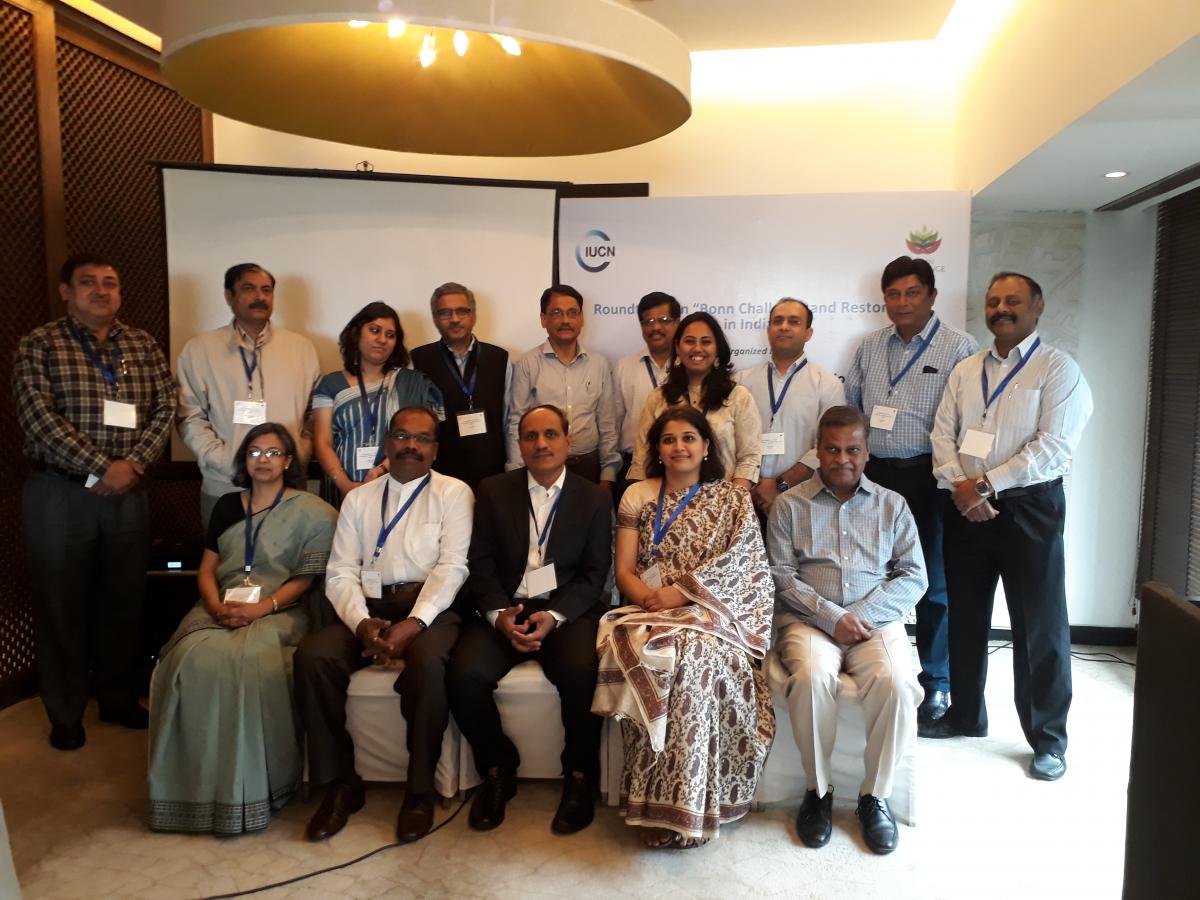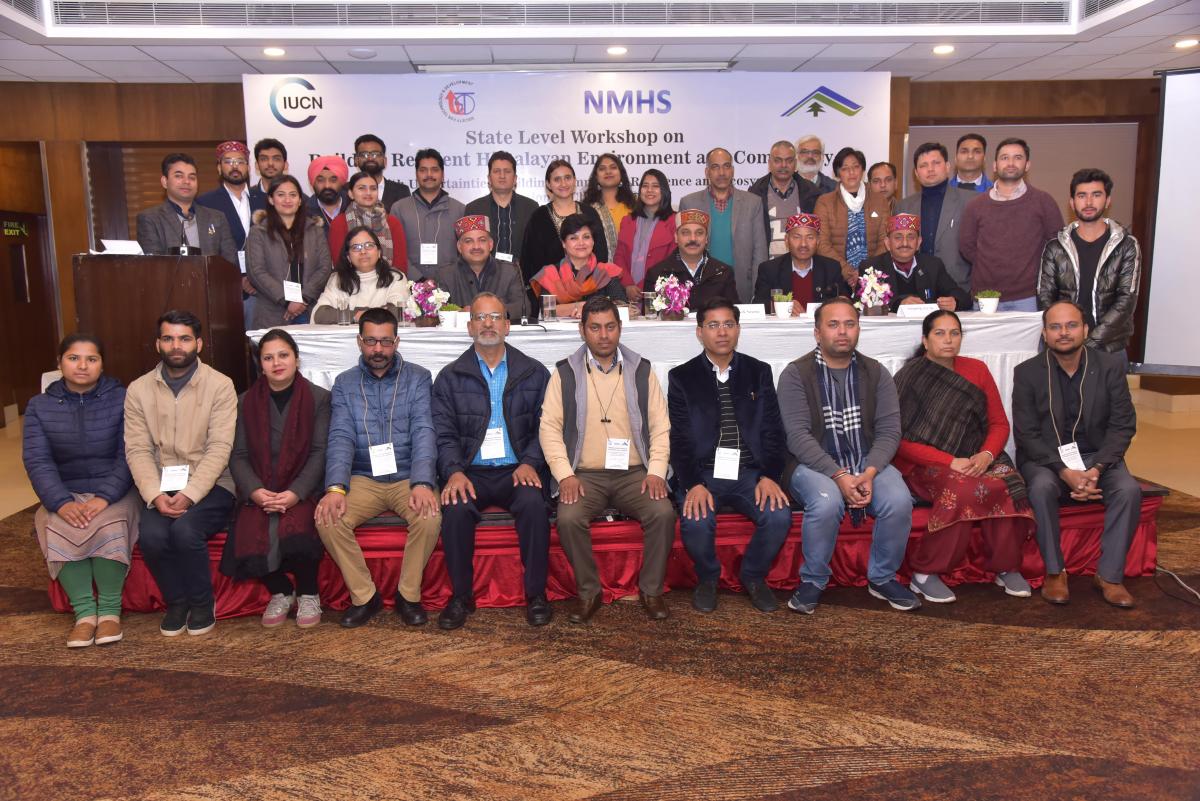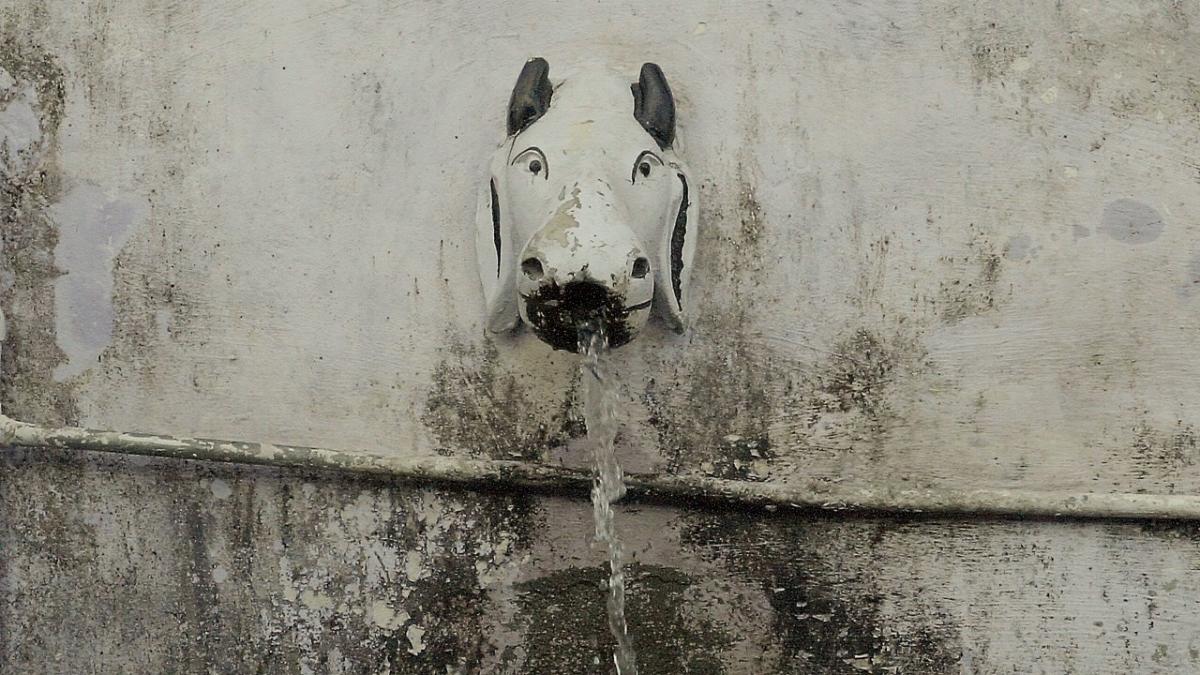Stakeholders come together to advance restoration efforts in India
Forests are undoubtedly amongst the most valuable ecosystem service providers in the world. Their role extends to securing sustainable energy, supporting biodiversity, safeguarding food and water security and climate change mitigation and adaptation. Despite this there has change in global forest land area from 4,128 million hectares in 1990 to 3,999 million hectares in 2015 (FAO Global Forest Resource Assessment). Many countries have rallied to address this. The Global Partnership for Forest Landscape Restoration estimated the extent of degraded land available for restoration to be more than two billion hectares worldwide - an area larger than South America. Thus, the Bonn Challenge was launched in 2011.

Photo: IUCN India
The Bonn Challenge expresses the global effort to restore more than 150 million hectares of the world’s deforested and degraded land by 2020 and 350 million hectares by 2030. It underscores the relevance of forests to human well-being as an implementation vehicle for national priorities (including water, food and economic security, and rural development) and international commitments to climate change mitigation, biodiversity conservation and sustainable development goals. Forest Landscape Restoration (FLR) is the long-term process of recovering ecological functionality and enriching human well-being in deforested/degraded forest landscapes. Globally, policy makers and restoration experts are realizing that the foundation of the Bonn Challenge, and the promise its goal holds for answering many of the world's most pressing challenges, rests in the principles of FLR.
At the Conference of Parties in Paris in December 2015, India pledged to restore 13 million hectares of degraded forest lands by 2020, and an additional 8 million hectares by 2030, as part of the Bonn Challenge. India’s national environmental policies have always had an emphasis on forest restoration. The National Mission for Green India (GIM) was set up with the purpose of increasing and improving the quality of forest/tree cover to the extent of 10 million hectares and in so doing increasing forest-based livelihood income of 3 million households. Restoration efforts are also being supported by policies and programmes such as the National Agro-forestry Policy (NAP), REDD-Plus Policy, Joint Forest Management initiative, National Afforestation Programme and the proposed devolution of about US$ 6 billion under Compensatory Afforestation Programme to states. Numerous NGOs, community-based organization and research institutions are supplementing restoration and rehabilitation efforts across the country through their own programmes and actions.
In light of all the efforts being made, IUCN organized a roundtable in March 2017 in New Delhi, to design a framework for reporting and documenting restoration initiatives, to showcase India’ progress towards addressing its Bonn Challenge pledge, at national and international forums. More than 20 participants from the government, research institutes, NGOs, CSOs, think tanks, as well as private sector were in attendance. Following a recap of ongoing restoration initiatives, participants deliberated on the structure and key elements of the framework. IUCN will continue to lead the documentation process in support of the Government of India.
To visit the website on Forest and Landscape Restoration Opportunities click here.
For more information on 'Improving the way knowledge on forests is understood and used internationally (KNOWFOR2)' click here.



